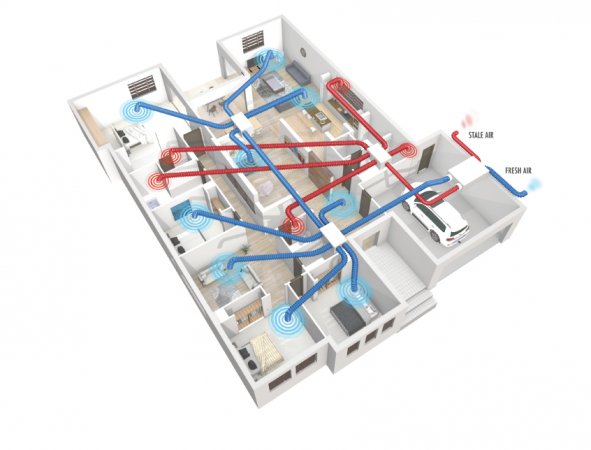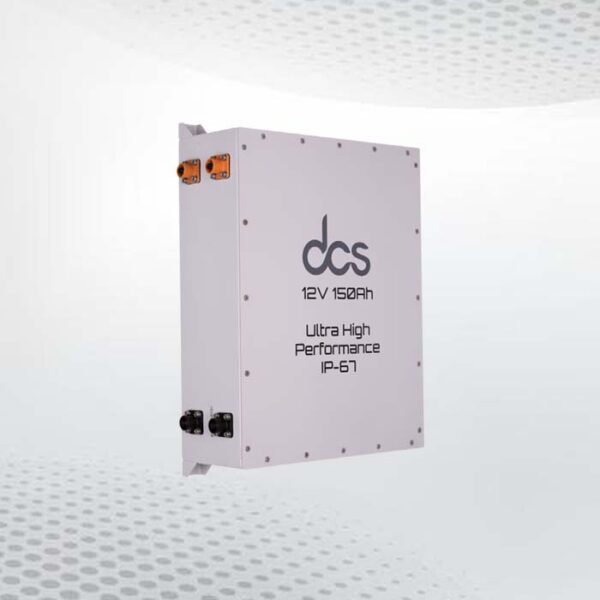In today’s world, where technology and electronic devices are an integral part of daily life, the importance of a reliable power source cannot be overstated. A pure sine wave power inverter stands out as a crucial device for converting DC power into AC power, ensuring that electronic equipment receives clean and efficient energy. This blog post delves into the reasons why one might opt for a pure-sine wave power inverter over other types.
Understanding Pure-Sine Wave Power Inverters
Pure-sine wave power inverters are engineered to closely mimic the smooth and consistent AC waveforms characteristic of standard electrical grids. Unlike their modified sine wave counterparts, these inverters produce electricity with a cleaner and more stable output, making them especially suitable for sensitive electronic devices. The underlying technology involves advanced circuitry that transforms DC power into a seamless AC output.
This capability is crucial for maintaining the optimal functioning of electronics, such as medical equipment and audio systems, which demand high-quality power to operate correctly. Additionally, pure-sine wave inverters are essential for preventing interference and ensuring longevity in devices. Their design ensures that power is delivered in a steady and uninterrupted manner, avoiding the issues associated with choppier waveforms. This makes them indispensable in applications where power quality is of the utmost importance.
Advantages over Modified Power Inverter
The superiority of a power inverter is evident in its ability to deliver a seamless and stable AC power output, as opposed to the choppier, less consistent output of modified sine-wave inverters. This distinction is crucial for the optimal functioning of devices sensitive to power quality. For instance, medical equipment and high-fidelity audio systems, which rely on a consistent power supply to operate effectively, benefit significantly from the clean energy provided by pure-sine wave inverters. Additionally, household appliances like microwaves, refrigerators, and air conditioners run more efficiently and experience fewer malfunctions when powered by a pure-sine wave inverter.
Furthermore, these inverters minimise the risk of electrical interference and noise, which can be problematic with modified sine-wave inverters. They also contribute to extending the lifespan of electronic devices by preventing the wear and tear caused by erratic power supply. Overall, the use of a pure-sine wave power-inverter ensures that sensitive and high-value electronics perform at their best, free from the issues commonly associated with less sophisticated power conversion methods.
Ideal Applications for Pure-Sine Wave Power Inverters
Pure-sine wave power inverters are particularly beneficial in environments where maintaining a stable and reliable power supply is crucial. They find extensive use in solar power systems, where they efficiently convert stored DC power from batteries into usable AC power for household appliances and electronics. Recreational vehicles (RVs) also benefit significantly from these inverters, allowing travellers to power laptops, televisions, and kitchen appliances without worrying about inconsistent power delivery.
Off-grid cabins and remote locations, which rely on alternative energy sources, often utilise pure-sine wave inverters to ensure that sensitive electronics and essential equipment operate smoothly. High-fidelity audio and video equipment, medical devices, and communication systems depend on the clean power provided by these inverters to function without interference or performance degradation.
In industrial settings, pure-sine wave inverters are used to support critical systems that cannot afford downtime or power anomalies. Additionally, these inverters are ideal for maritime applications, ensuring that navigation and communication systems on boats and yachts receive uninterrupted power. Their versatility and reliability make pure-sine wave power inverters an invaluable asset across various applications where power quality is a priority.
Key Features to Look For Best Pure Sine Wave Inverter
When evaluating a best pure sine wave inverter, it is essential to consider several critical features to ensure optimal performance and reliability. The wattage rating of the inverter is a fundamental aspect, as it determines the total power capacity available for connected devices. Efficiency percentage is another crucial feature, indicating how effectively the inverter converts DC power to AC power, which can impact overall energy consumption and performance. Surge capacity is equally important, as it reflects the inverter’s ability to handle short bursts of high power demand, a common occurrence with many appliances.
Safety mechanisms are indispensable for protecting both the inverter and the connected devices. Features such as overload protection, short circuit protection, and thermal shutdown capabilities help prevent damage from power anomalies and overheating. An LCD display can provide real-time information on power status, load levels, and any fault conditions, enhancing user control and monitoring.
Remote control functionality adds convenience, allowing users to operate the inverter from a distance. These key features collectively contribute to the efficacy, safety, and user-friendliness of a pure-sine wave power inverter, making them crucial considerations during the selection process.
Installation and Maintenance Tips
Proper installation and maintenance of a pure-sine wave power inverter are vital for ensuring its long-term performance. The manufacturer’s guidelines should be closely followed, paying particular attention to placement in a well-ventilated area, free from excessive heat and moisture. This helps in avoiding overheating and enhances the overall efficiency of the unit. Regular inspections should be conducted to check for loose connections and signs of wear or damage.
Dust and debris should be periodically cleaned from the unit to prevent any airflow obstruction, which could lead to overheating. Additionally, testing the inverter’s performance periodically can help identify any issues before they become severe. Ensuring that the inverter is not overloaded by connected devices is also crucial, as exceeding its capacity can result in erratic performance or damage.
For inverters used in demanding environments, more frequent maintenance checks may be necessary. Following these steps can help in maintaining the optimal functionality of the pure-sine wave power inverter, ensuring that it continues to provide clean and reliable power for all connected devices.
Comparing Brands and Models with Modified Sine Wave Inverter
When comparing brands and models of modified sine wave inverter, several factors should be evaluated to determine the best fit for specific needs. Top-tier brands are often recognised for their robust build quality, reliability, and advanced features. Inverters from these brands may offer superior efficiency ratings, higher surge capacities, and enhanced safety mechanisms, reflecting their commitment to quality and performance.
User reviews and professional assessments can provide valuable insights into real-world performance and longevity, highlighting any recurring issues or particularly advantageous features. Comparing warranty terms is also critical, as a comprehensive warranty can offer peace of mind and financial protection against potential defects or failures. Additionally, the availability of after-sales support and customer service can significantly impact the user experience.
Brands that offer extensive support networks and responsive service teams tend to provide a smoother ownership experience, which can be crucial for troubleshooting and maintenance. Furthermore, specific models may offer unique features such as remote control capabilities, LCD displays, and various connectivity options, catering to different application needs. Evaluating these features alongside core specifications ensures that the chosen pure-sine wave power inverter aligns with both functional and budgetary requirements.
Cost Considerations and Budgeting
When assessing the cost considerations for pure-sine wave power inverters, it is important to evaluate both the upfront investment and the long-term benefits. Although the initial purchase price of these inverters is generally higher compared to modified sine wave models, their superior efficiency and ability to safeguard sensitive electronics can result in savings over time.
Installation costs should also be factored in, as professional installation may be necessary to ensure optimal performance and compliance with safety standards. Additionally, considering the longevity and durability of pure-sine wave inverters can help in justifying the higher initial expense, as they tend to require less frequent replacement and maintenance.
Budgeting should also take into account any potential costs for replacement parts or professional servicing, which, although typically minimal, are essential for maintaining the inverter’s performance. Comparing different brands and models, as previously mentioned, can provide insights into varying price points and feature sets, allowing for a more informed decision that balances cost with functional needs. Ultimately, careful consideration of these factors will aid in selecting a pure-sine wave power inverter that aligns with both financial constraints and operational requirements.
Common Issues and Troubleshooting
Common issues with pure-sine wave power inverters can include overheating, unusual buzzing noises, and erratic performance. Overheating may be mitigated by ensuring the unit is installed in a well-ventilated area, free from dust and debris. Buzzing noises might indicate interference or issues with the internal components; checking for loose connections and ensuring that the inverter is not overloaded can often resolve this. Erratic performance can stem from several factors, including an overloaded system or a failing component.
Regular maintenance checks, such as inspecting for signs of wear and ensuring that the connected devices are within the inverter’s capacity, can help prevent these problems. If these common troubleshooting steps do not resolve the issues, seeking assistance from the manufacturer’s support team or a qualified technician is advisable. This approach ensures that any underlying problems are professionally addressed, maintaining the inverter’s reliability and performance.
Conclusion
A pure sine wave power inverter is a highly efficient and reliable device for converting DC power into smooth, clean AC power identical to what’s supplied by the grid. Ideal for sensitive electronics, medical equipment, and appliances, pure sine wave inverters ensure consistent performance without the risk of interference or damage. With a range of power capacities, they offer versatility for home, RV, marine, and off-grid applications. For those seeking dependable, high-quality power conversion, pure sine wave inverters provide excellent functionality and long-term value.
FAQs
What is a pure sine wave power inverter?
A pure sine wave power inverter converts DC power from sources like batteries into AC power with a smooth, wave-like output similar to grid electricity, ensuring safe operation of sensitive electronics and appliances.
Why choose a pure sine wave inverter over a modified sine wave-inverter?
Pure sine wave-inverters provide cleaner, stable power, which is essential for sensitive devices like medical equipment, computers, and appliances with AC motors. They prevent issues like overheating, buzzing sounds, and potential damage, which can occur with modified sine wave-inverters.
What devices work best with a pure sine wave inverter?
Pure sine wave inverters are ideal for sensitive electronics, such as TVs, laptops, medical equipment, and appliances like refrigerators and microwaves, as well as any device that relies on precise waveforms for smooth operation.
How do I choose the right size of pure sine wave inverter?
Select an inverter based on the combined wattage of all devices you intend to power. Ensure the inverter’s continuous power rating meets or exceeds this total, and consider a model with a surge capacity to handle startup power demands.
Is a pure sine wave inverter necessary for solar power systems?
While not mandatory, a pure sine wave inverter is highly recommended for solar systems, especially if you plan to power sensitive electronics. It maximizes efficiency and compatibility with household appliances and is crucial for off-grid or backup power setups.
How long do pure sine wave inverters last?
With proper use and maintenance, a high-quality pure sine wave inverter can last between 5 to 10 years. Ensuring it’s protected from moisture, dust, and overheating, as well as using it within its rated capacity, can help extend its lifespan.




